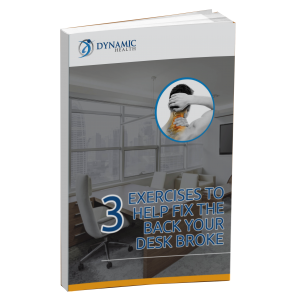The best way to imporve your posture will be different for everyone but there are some common considerations that will be important for most people:

In many cases time spent sitting is the primary factor in the development of postural problems. Even if you exercise for an hour every day, if you sit for long periods, especially in a poor positon, this is a battle you won’t win. For those that work at a desk there may be no getting around having to sit for some period of time but there are variations and alternatives that can help:
If do you have to sit for work make sure your chair set-up is as back friendly as possible. Click here for infomation on proper chair set up.

Walking is the perfect anedote to sitting. Aim for at least 1 hour of walking per day (but this doesn’t have to be in one go).
When walking remember to:
In most cases targeted exercise is needed to either strengthen weakened postural muscles or lengthen short / tight muscles. Here are 3 simple foam roll exercises targetting common postural probelms or download our free ebook:

Learn which areas of your body are affected most by a long term sedentary lifestyle and 3 easy exercises you can start doing today for less pain, less stiffness and improved health.
In chronic or stubborn cases, in addition to the strategies outlined above, hands-on treatment may be required. There a number of effective treatment options available including:
Changes in posture are often accomapnied with restriction of specific joints. Joint restriction is most commonly seen in the upper neck, mid-back, pelvis and feet. Chiropractic or Osetopathic manipulation is a controlled, specific force applied to a restricted spinal or extremity joint. It is often associated with a ‘clicking’ or ‘popping’ noise, similar to what you might hear when a wet glass is lifted from a table – this is simply caused by a release of gas from the joint as movement is restored. Manipulation a very quick and effective approach to restore proper movement to restricted joints to improve posture and reduce pain.
Mobilisation also works to free restricted joints but involves slower movements so is not usually associated with ‘clicking’ or ‘popping’.
Changes in posture also effects the muscles and other soft tissues (ligaments, tendons etc), with some muscles prone to tightness and others prone to weakness. A variety of soft tissue technqiues can be employed to address short or tight muscles to improve mobility and posture and to reduce pain. Common soft tissue techniques include ischamic compression, cross friction, active release, graston and pin and stretch.
Dry needling is a therapeutic technique using an acupuncture needle to penetrate the skin and stimulate the underlying tissue. It is very effective at treating deep trigger points (knots) in the muscles which may be limiting movement, disturbing posture or casuing pain.
If you are looking for effective treatment for your posture click here to see how we can help.

This post was written by Steffen Toates. Steffen is a chiropractor at Dynamic Health Chiropractic in Jersey CI. For more information about Steffen click here.
© 2025 Dynamic Health. Powered by Oncord
Leave a Comment